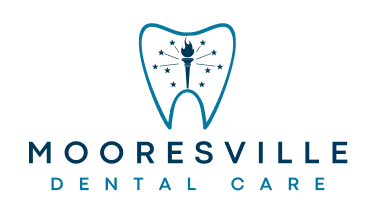
Teeth whitening
Category : Uncategorized
Teeth whitening or bleaching is a simple, non-invasive dental treatment to change the color of natural tooth enamel to enhance the beauty of your smile. Teeth whitening may be accomplished in a dental office or at home. The procedure uses a chemical called peroxide to bleach or whiten the teeth.
Why Did My Teeth Change Color?
Over time, your teeth can go from white to not-so-bright for a number of reasons:
Food and Drink
Coffee, tea and red wine are some major staining culprits. What do they have in common? Intense color pigments called chromogens that attach to the white, outer part of your tooth (enamel).
Tobacco Use
Two chemicals found in tobacco create stubborn stains: Tar and nicotine. Tar is naturally dark. Nicotine is colorless until it’s mixed with oxygen. Then, it turns into a yellowish, surface-staining substance.
Age
Below the hard, white outer shell of your teeth (enamel) is a softer area called dentin. Over time, the outer enamel layer gets thinner with brushing and more of the yellowish dentin shows through.
Trauma
If you’ve been hit in the mouth, your tooth may change color because it reacts to an injury by laying down more dentin, which is a darker layer under the enamel.
Medications
Tooth darkening can be a side effect of certain antihistamines, antipsychotics and high blood pressure medications. Young children who are exposed to antibiotics like tetracycline and doxycycline when their teeth are forming (either in the womb or as a baby) may have discoloration of their adult teeth later in life. Chemotherapy and head and neck radiation can also darken teeth.
How Does Teeth Whitening Work?
Teeth whitening is a simple process. Whitening products contain one of two tooth bleaches (hydrogen peroxide or carbamide peroxide). These bleaches break stains into smaller pieces, which makes the color less concentrated and your teeth brighter.
Does Whitening Work on All Teeth?
No, which is why it’s important to talk to your dentist before deciding to whiten your teeth, as whiteners may not correct all types of discoloration. For example, yellow teeth will probably bleach well, brown teeth may not respond as well and teeth with gray tones may not bleach at all. Whitening will not work on caps, veneers, crowns or fillings. It also won’t be effective if your tooth discoloration is caused by medications or a tooth injury.
What Are My Whitening Options?
Talk to your dentist before starting. If you are a candidate, there are four ways to put the shine back in your smile:
Stain Removal Toothpastes
All toothpastes help remove surface stain through the action of mild abrasives that scrub the teeth. Look for whitening toothpastes that have earned the ADA Seal of Acceptance for stain removal (it will tell you on the package). These toothpastes have additional polishing agents that are safe for your teeth and provide stain removal effectiveness. Unlike bleaches, these types of ADA-Accepted products do not change the color of teeth because they can only remove stains on the surface.
In-Office Bleaching
This procedure is called chairside bleaching and usually requires only one office visit. The dentist will apply either a protective gel to your gums or a rubber shield to protect your gums. Bleach is then applied to the teeth.
At-Home Bleaching from Your Dentist
Your dentist can provide you with a custom-made tray for at-home whitening. In this case, the dentist will give you instructions on how to place the bleaching solution in the tray and for what length of time. This may be a preferred option if you feel more comfortable whitening in your own home at a slower pace, but still with the guidance of a dentist. Out-of-office bleaching can take anywhere from a few days to a few weeks.
Over-the-Counter Bleaching Products
You may see different options online or in your local grocery store, such as toothpastes or strips that whiten by bleaching your teeth. The concentration of the bleaching agent in these products is lower than what your dentist would use in the office. If you are thinking about using an over-the-counter bleaching kit, discuss options with your dentist and look for one with the ADA Seal of Acceptance. That means it has been tested to be safe and effective for teeth whitening. Get a list of all ADA-Accepted at-home bleaching products.
Are There Any Side Effects from Teeth Whitening?
Some people who use teeth whiteners may experience tooth sensitivity. That happens when the peroxide in the whitener gets through the enamel to the soft layer of dentin and irritates the nerve of your tooth. In most cases the sensitivity is temporary. You can delay treatment, then try again.
Overuse of whiteners can also damage the tooth enamel or gums, so be sure to follow directions and talk to your dentist.
Is whitening good for teeth?
Over 10 years of clinical use of teeth whitening products containing 10% carbamide peroxide have not shown any damage to existing fillings. Do teeth whiteners damage a tooth’s nerve? There’s no evidence that the teeth whitening process has a harmful effect on the health of a tooth’s nerves.

 Review Us
Review Us  Review Us
Review Us